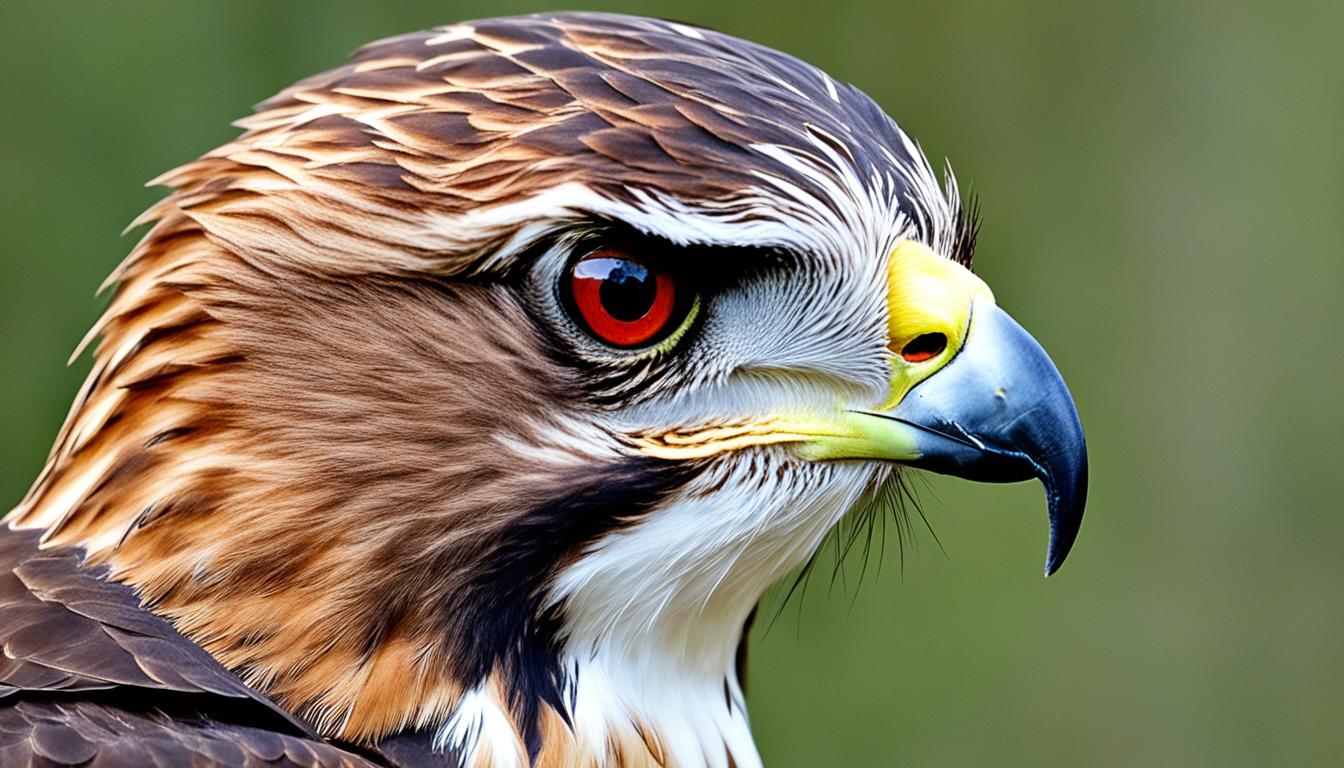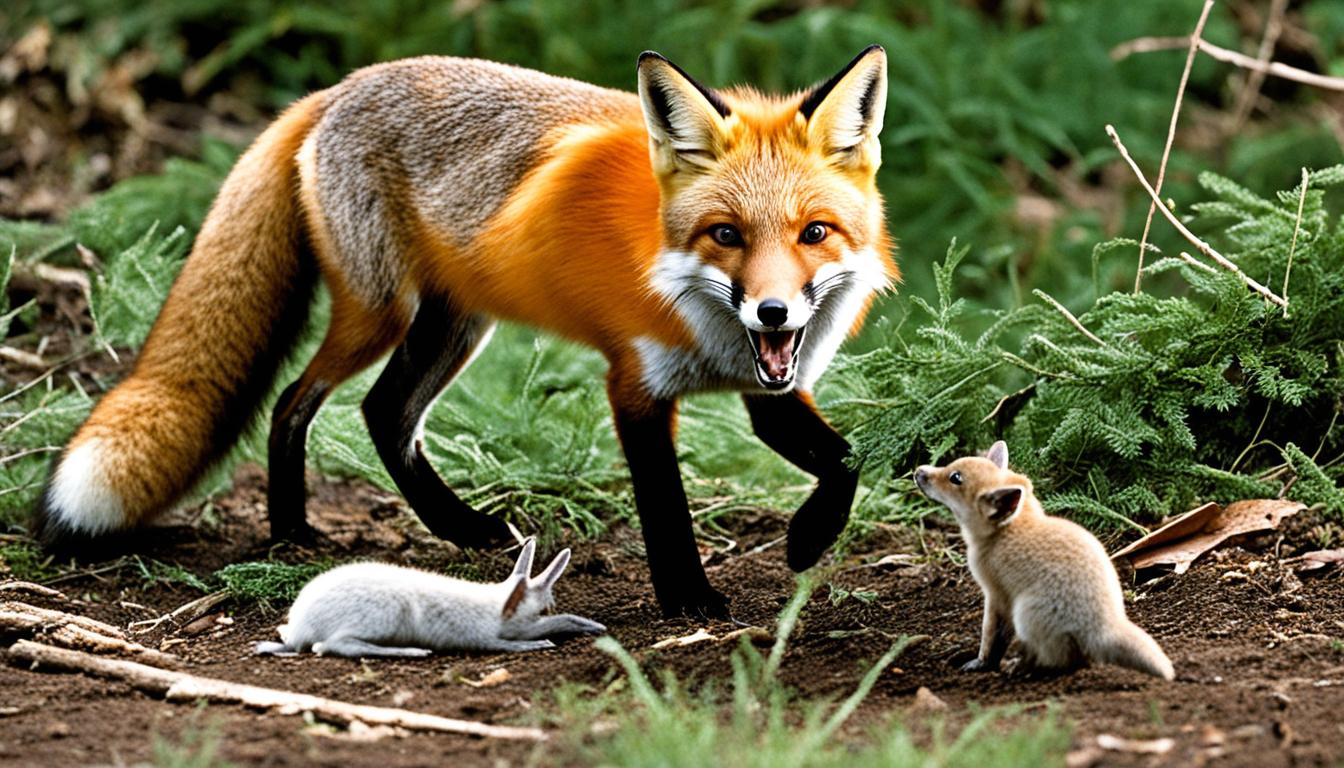Eagles are known for their majestic appearance and impressive hunting skills. However, you may wonder if their reputation as predators poses a danger to humans. In this section, we will explore the question of whether eagles are dangerous to humans and examine the facts surrounding eagle attacks.
By understanding the behavior of eagles and their interactions with humans, we can determine if there is a cause for real concern. Let’s examine the data and uncover the truth about eagle attacks.
Key Takeaways
- Eagles are predators and have formidable hunting skills.
- There is a low risk of eagle attacks on humans.
- Understanding eagle behavior and respecting their natural habitat can minimize any potential dangers.
Eagle Behavior and Predation
Eagles are majestic creatures with impressive physical abilities and acute senses. They are classified as birds of prey, with their primary source of food being other animals. With their sharp talons and powerful beaks, eagles have the ability to hunt and kill creatures much larger than themselves. Understanding their behavior and role as predators is essential in evaluating any potential danger they pose to humans.
Eagle behavior
Eagles are highly adaptable creatures and can be found in various habitats, from forests to deserts to coastal areas. They are known for their exceptional eyesight, which allows them to spot prey from great distances. Eagles are also skilled fliers, and their wingspan can reach up to seven feet. They are capable of flying at high altitudes and can reach speeds of up to 80 miles per hour. Eagles are solitary birds, and they typically mate for life. They have a hierarchical social structure, with dominant birds having priority access to food and other resources.
Eagle predation
Eagles are apex predators, meaning that they are at the top of the food chain in their ecosystem. They have a wide range of prey, including fish, small mammals, and birds. Eagles are opportunistic hunters and will take advantage of any available food source. They are known for their ability to hunt in a variety of ways, including soaring, diving, and ambushing. Eagles will use their sharp talons to catch their prey, and their powerful beaks to tear it apart for consumption. Their hunting techniques are efficient and deadly, making them formidable predators in their environment.
While eagles are undoubtedly powerful and skilled hunters, it is important to note that they do not typically view humans as prey. Most eagle attacks on humans occur when the bird feels threatened or is defending its territory. Understanding these triggers for aggression is key to avoiding dangerous human-eagle interactions.
Human Encounters with Eagles and Understanding Eagle Aggression
Eagles are majestic creatures that are a sight to behold. However, caution must be exercised when in close proximity to these predators. In general, eagles pose minimal danger to humans. However, certain situations can trigger their aggression, causing them to perceive humans as a threat.
Understanding the factors that lead to eagle aggression is crucial in avoiding dangerous encounters. Eagles are territorial creatures that protect their nests and hunting grounds with vigilance. If you unknowingly approach an eagle’s territory, it may interpret your presence as a threat and react accordingly.
Another triggering factor for eagle aggression is when they are defending their offspring. During the breeding season, eagles are particularly protective of their young ones and may perceive humans as a danger to them.
It is essential to understand the signs of eagle aggression, which can include vocalization, flapping of wings, and diving towards a target. If you notice an eagle exhibiting aggressive behavior, it’s vital to keep your distance and avoid provoking the bird.
It’s worth noting that not all eagles exhibit aggressive behavior towards humans. However, it’s important to remain vigilant and respectful of their natural habitat to avoid triggering their aggression unnecessarily.
If you are in an area inhabited by eagles and would like to observe them, it’s best to do so from a safe distance. Do not attempt to approach the birds or their nests, and avoid making loud noises or sudden movements that may startle them.
Overall, by understanding eagle behavior and respecting their natural habitat, human encounters with eagles can be both safe and enjoyable experiences.
How to Stay Safe around Eagles: Eagle Safety Tips
If you are planning a camping or hiking trip in eagle territory, it is important to take safety precautions to avoid potential danger. By following these eagle safety tips, you can minimize the risk of encountering an aggressive eagle:
- Observe from a safe distance: To avoid disturbing eagles, observe them from a distance of at least 100 yards. Use binoculars or a zoom lens to get a closer look without putting yourself in harm’s way.
- Do not feed eagles: Feeding eagles can disrupt their natural hunting and feeding patterns, leading to dependence on humans for food. This can lead to aggressive behavior and potentially dangerous encounters.
- Keep food and garbage secured: Eagles have a keen sense of smell and may be attracted to food and garbage left out in the open. Keep all food and garbage secured in containers that eagles cannot access.
- Avoid nesting areas: Eagles are fiercely protective of their nests and may attack if they feel threatened. Avoid nesting areas during breeding season, which is typically from January to August.
- Move away slowly: If you do encounter an eagle, slowly back away while keeping your eyes on the bird. Do not turn your back or run, as this can trigger an attack.
Following these basic guidelines can help you enjoy observing eagles in their natural habitat while minimizing any potential dangers. Remember, eagles are an important part of the ecosystem and should be respected and appreciated from a safe distance.
Conclusion
In conclusion, are eagles dangerous? While they are powerful predators, they generally do not pose a significant threat to humans. By understanding their behavior and following safety guidelines, you can minimize any potential risk when encountering eagles in the wild.
Remember to always respect their natural habitat and observe eagles from a safe distance. If you do come into contact with an eagle, learn to interpret their behavior and avoid any actions that may trigger aggression.
Following these guidelines will enable you to coexist with these magnificent birds and appreciate their important role in the ecosystem. So go ahead and take a hike, keep an eye out for eagles, and enjoy the beauty of nature.











